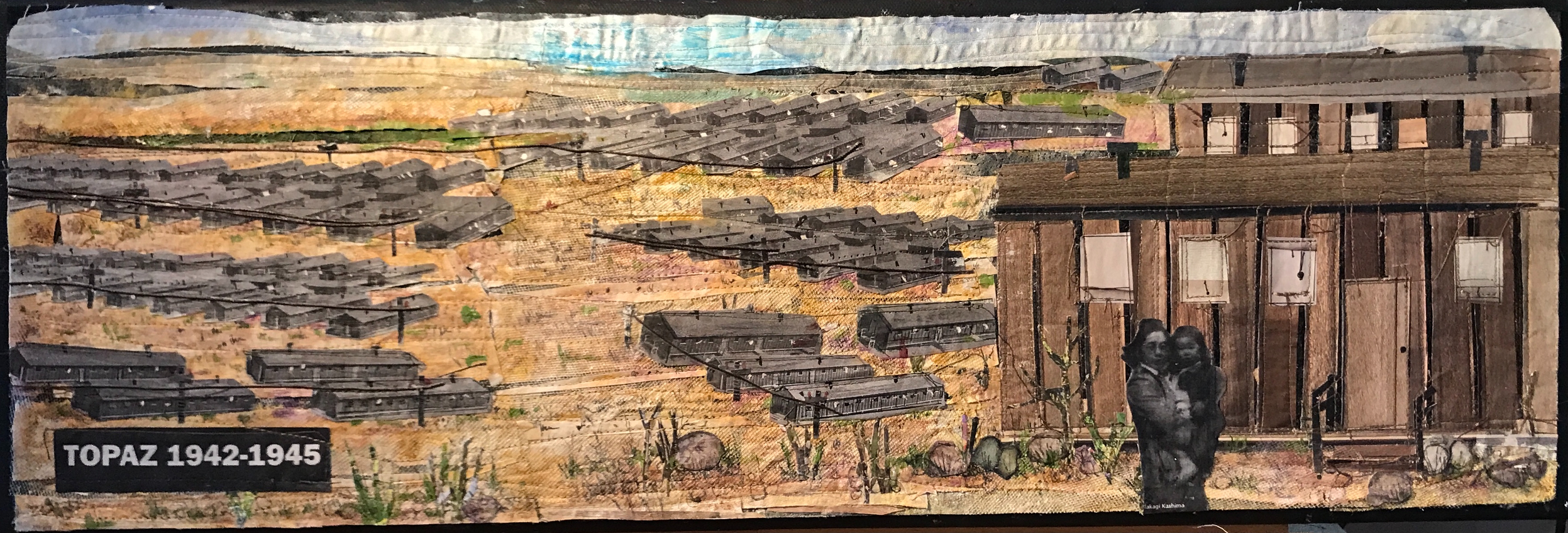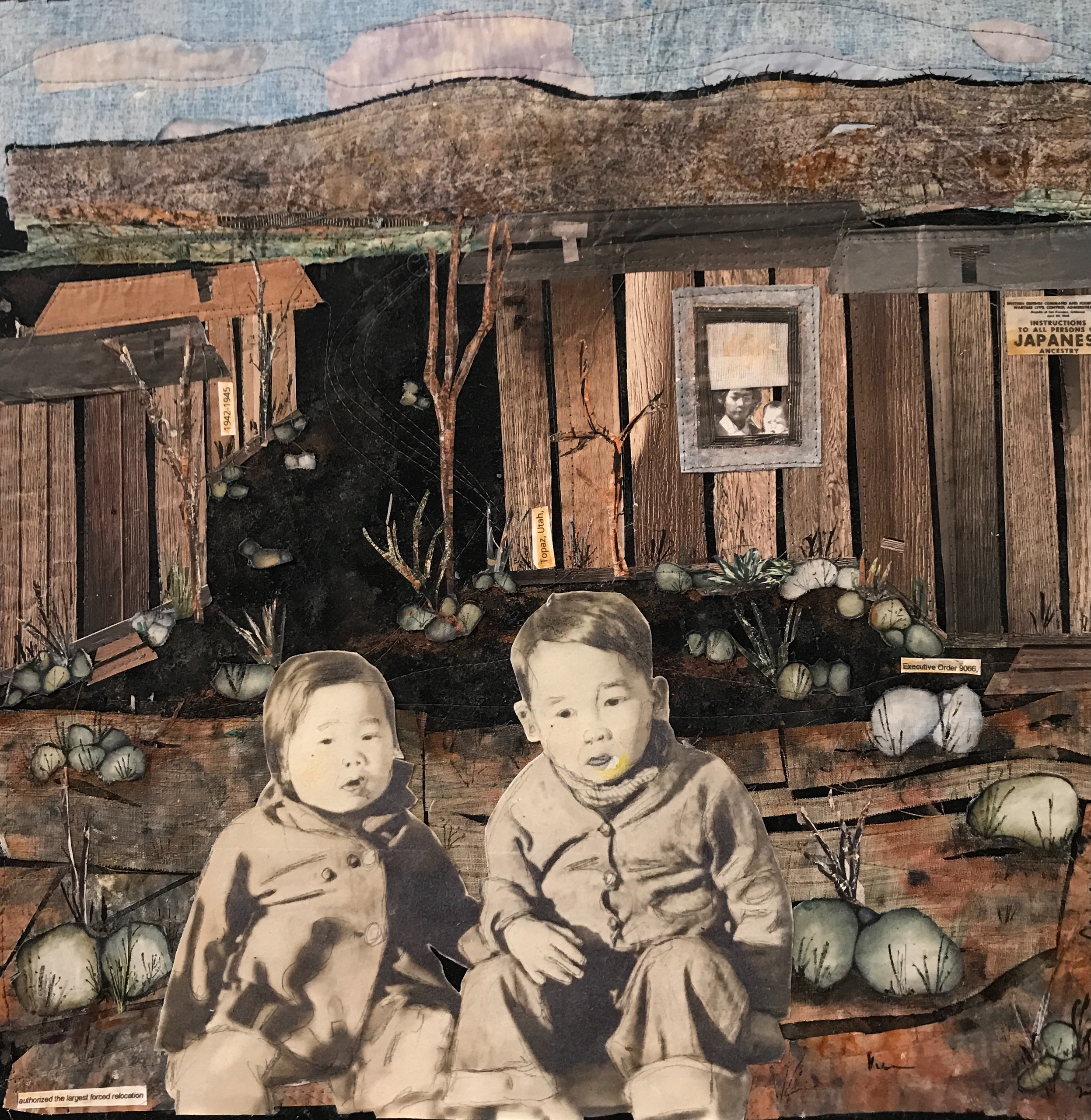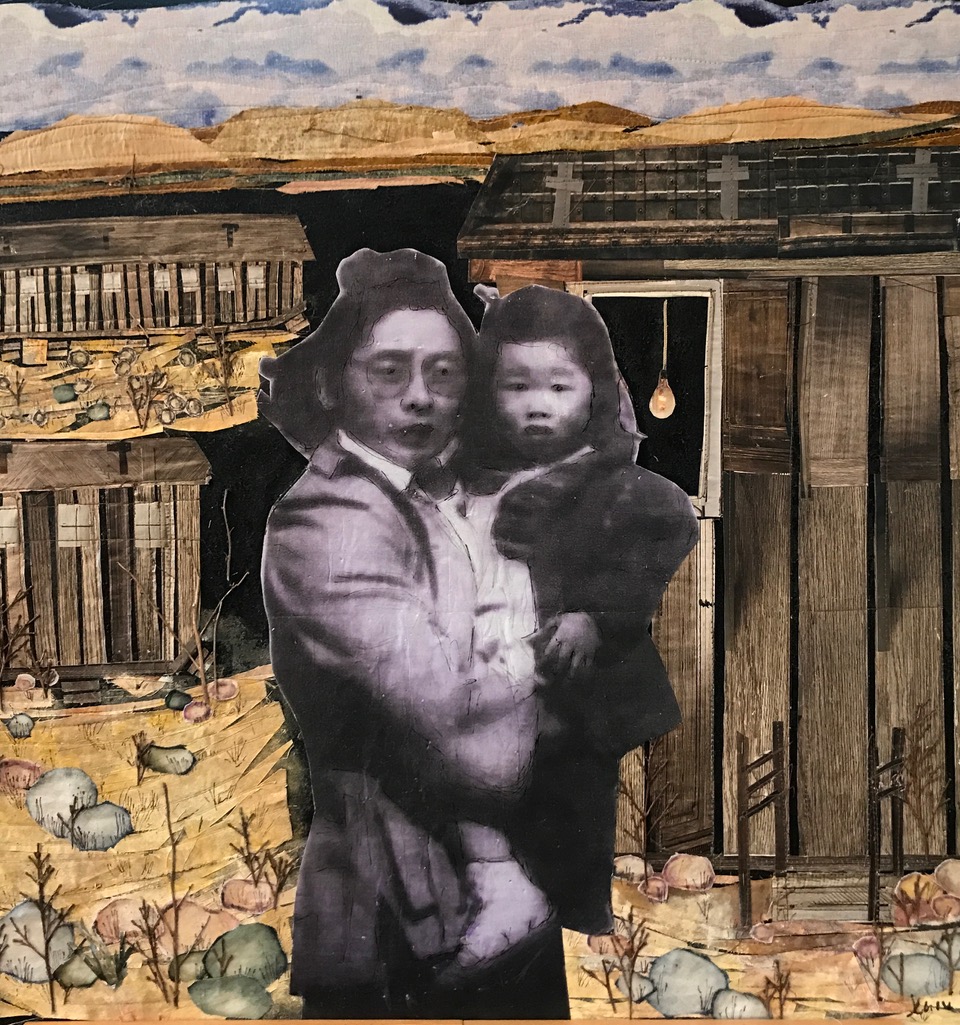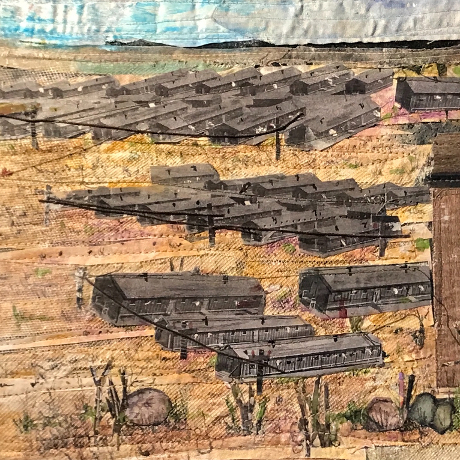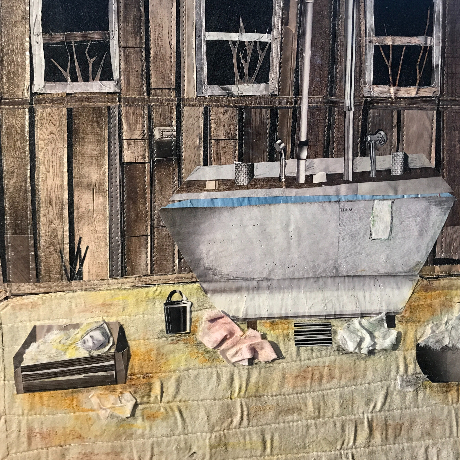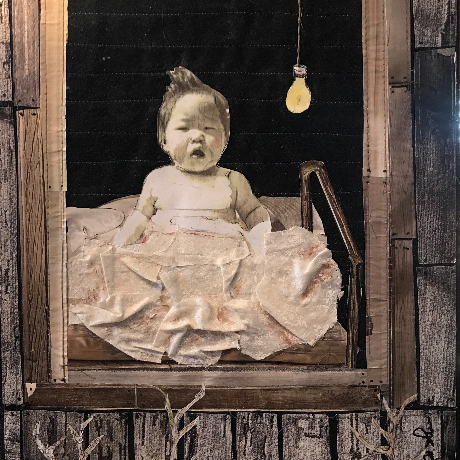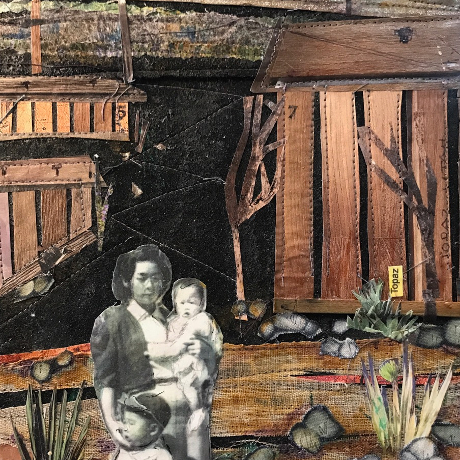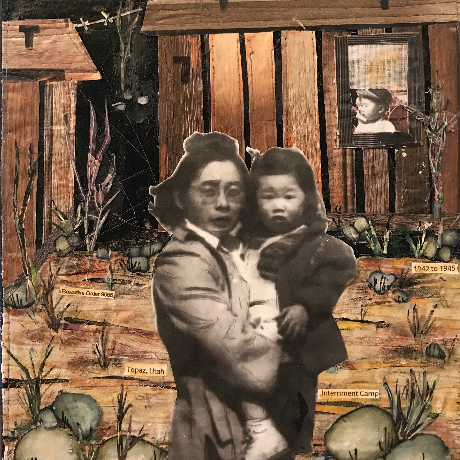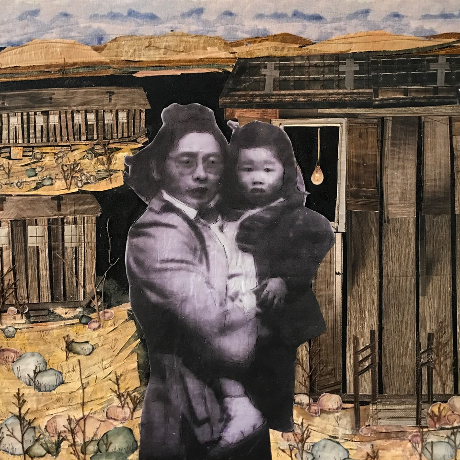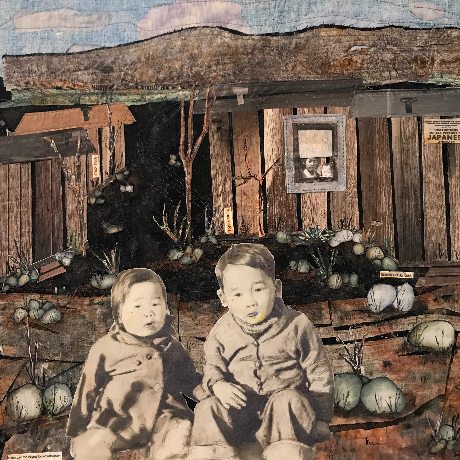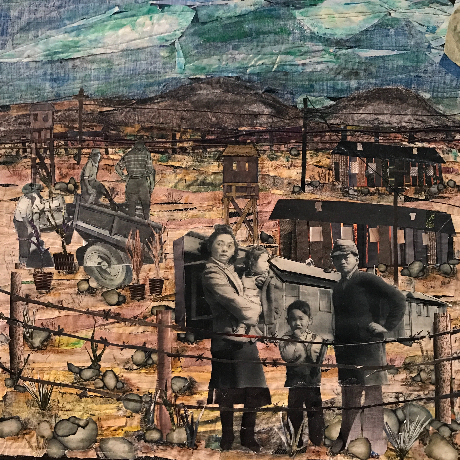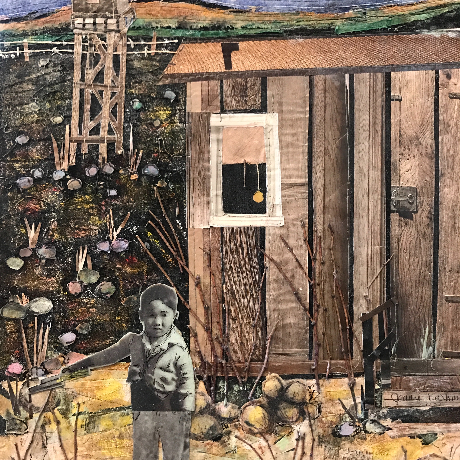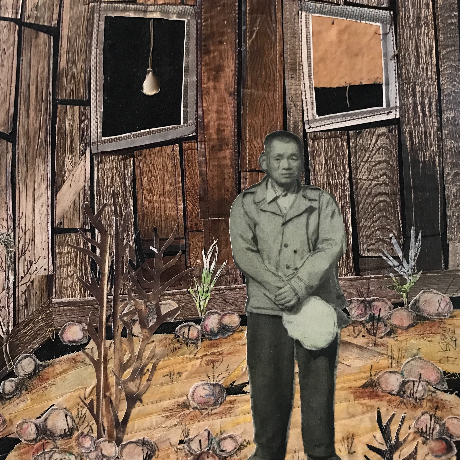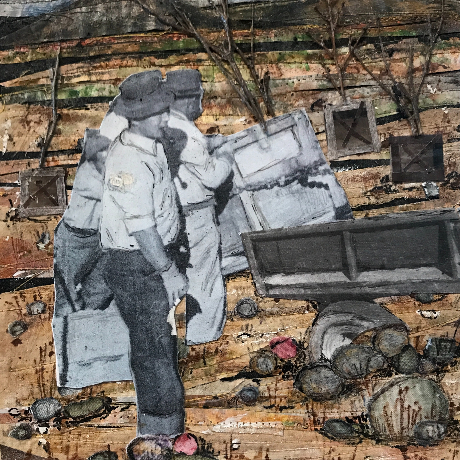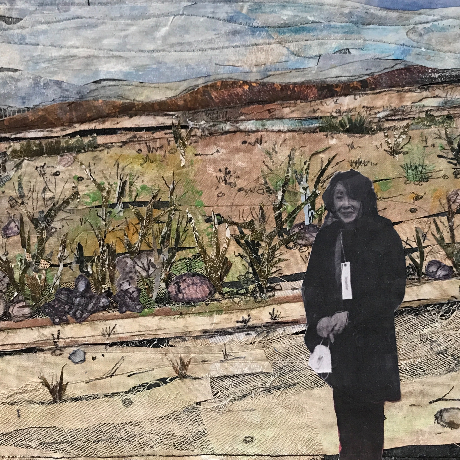Topaz Collages
Jeanie Kashima
January 21 – May 27, 2023
ABOUT THE EXHIBITION
The Topaz in this exhibit refers to the Topaz Concentration Camp that was built in Utah in 1942 after President Franklin Roosevelt signed Executive Order 9066. That order, signed on February 19, 1942, authorized the removal of 120,000 people of Japanese ancestry from the western states of the United States, from Washington to the state of California, to the interior of the country. Despite the fact that three quarters of the evacuees were American citizens, they were not allowed any due process in their removal. There was no evidence at that time and in the following years that any of the Japanese evacuees posed any danger to the people and the government of the United States.
All persons of full or partial Japanese ancestry were ordered to leave their homes and move inland to one of ten Concentration Camps. All those of Japanese ancestry living in the San Francisco Bay Area (Berkeley, San Francisco, Oakland, Richmond, Albany, Alameda) were eventually relocated to the Topaz Concentration Camp in Utah. Evacuees were given ten days to leave their homes. The move involved selling property, settling business arrangements, and packing up their homes. Internees were not allowed to bring pets, so new homes for family animals also had to be secured quickly. Internees were allowed only one suitcase per person in their move.
The collages displayed here are the work of one Topaz internee, Jeanie Kashima. Her father, mother, and older brother lived in Berkeley in 1942 and were ordered to the Topaz Concentration Camp. Initially her family and other internees were ordered to the Tanofran Race Track, where they lived for several months while the construction of the Topaz Concentration Camp was completed. Kashima’s family had to leave their spacious and comfortable home and adapt to the horse stalls at the Tanofran Race Track. After a number of months, her family and other internees boarded a train to Delta, Utah. From there, they traveled by bus to the Topaz Concentration Camp and remained at Topaz until 1945. The artist was the first baby to be born in the Camp.
The Topaz Collages Exhibit consists of 12 collages begun during the Covid isolation from 2020 to 2022. Each collage consists of a photograph or photographs taken in the Topaz Concentration Camp from the years 1942 to 1945. Initially the internees were told that they could not have cameras when entering the Camp, so many internees do not have photos of themselves as infants or young children. Kashima had two uncles who had joined the Armed Forces and were able to visit relatives behind barbed wire fences. These uncles were allowed to have cameras and take photos of relatives, including the artist’s family. Kashima became aware of the photos several years ago. The photos themselves are approximately 2” x 3” and lost some clarity in the enlarging process. Nevertheless, they form the basis for Kashima’s powerful and ultimately clear works of art.
EXHIBITION GALLERY

